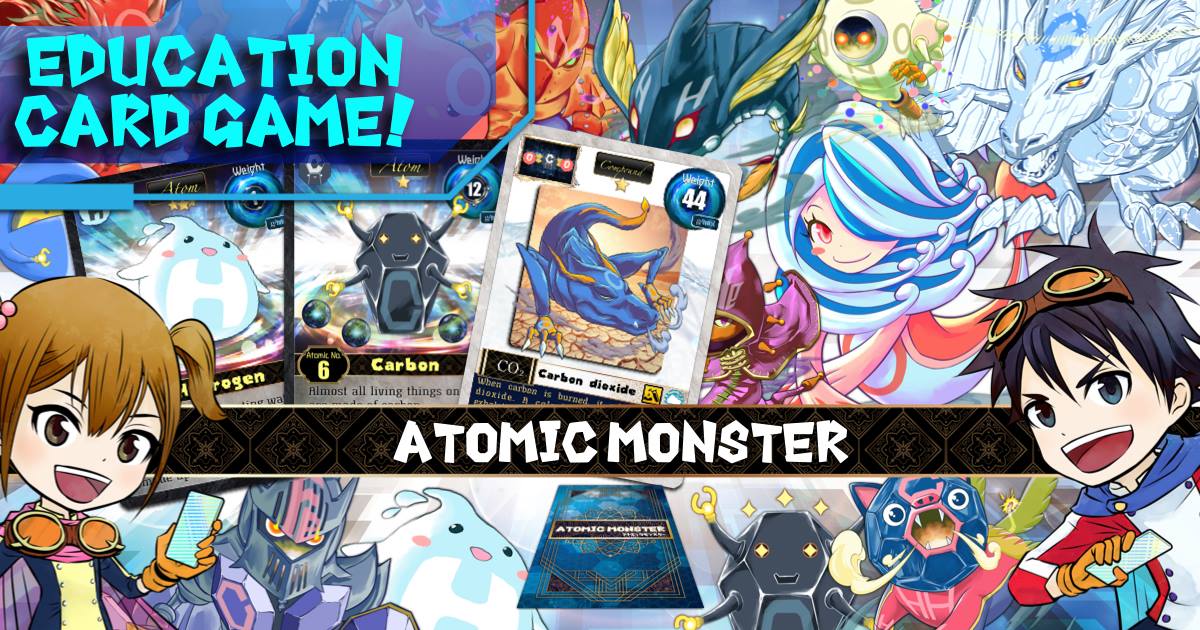
The Chemistry Battle Card Game for Kids! Great for Science Education!
Come across this card game in Japan. At the moment, there are two versions of this game, and the earlier one is localized and released in the US. They are using a modified concentration card game (神経衰弱) as their core mechanic. When it comes to designing educational games, one of the important principles is to design what’s going through players’ minds at the moment of making a play decision. If players are making meaningful decisions while thinking of the learning subject or reviewing pieces of knowledge related to it in their heads, that moment of association will create a learning opportunity for teachers.
The concentration card game is essentially a memory game, players are competing to flip cards into pairs based on their memory of locations of flipped cards. ATOM MONSTERS adds a few more rules to turn it into a learning game by creating decision moments associated with the learning contents. Instead of making pairs, players now have to create molecules with the elements presented on the card. This change of rules enables students to constantly refer to the molecule sheet and try to find the possible molecule combo for their flipped cards. Students can also declare a molecule and flip two more cards to see if they can form the molecule. If they don’t, they lose all the efforts so far. This bidding mechanic straightens the association between the game and the learning subject. Players will remember what’s their lucky/unlucky molecule for a long time.
ATOM MONSTERS is just a game, a simple and well-designed one. In order for the actual learning to happening in a full circle, the facilitator’s attention is required, especially after the game is done. A useful method is to have facilitators (parents, teacher, or gamemaster) chat with players about how they made certain critical decisions in game, and connect those game moments to learning contents in real-life. If players are interested in the subject, they are encouraged to find out more about it by looking at videos and books. These activities outside of the gameplay can help players appreciate the game even more, e.g. when players found out why NH3 is portrayed as a stinky pumpkin-like monster in the game is because of how ammonia is smelled in real life.
Official Game (Nervous Breakdown) Rules here:
(1) Start with the youngest in order of age.
(2) When it’s your turn to play, flip one of the atomic cards.
(3) Flip one more sheet to make a molecule. (so flip two cards total.)
(4) Think about whether it is possible to make a molecule by using all of them.
▽The molecule was created
→ Get the molecule card
▽If you couldn’t make a molecule
→ You can’t get the molecule card
(5) If you feel like making a larger molecule, flip one more card.
You need to use up all of the atomic cards that you flip. If you flip an unwanted atomic card, it will fail. Be careful in the second half of the game as there are only a few cards left. Helium is a special atom that can’t become any kind of molecule, so if you subtract it, you lose. You can’t make a molecule that other people got a molecule card for, so first come, first served !
A perfect scenario:
(2) flip a H
(3) flip a H
(4) H,H => H2 Hydrogen = 2 points
Decide to make a larger molecule
(5) flip a N
N,H => NH3 Ammonia = 17 points
Stop & change player.
Rules explained in Japanese:
https://vimeo.com/user84368974/review/394844485/a73aaa9727